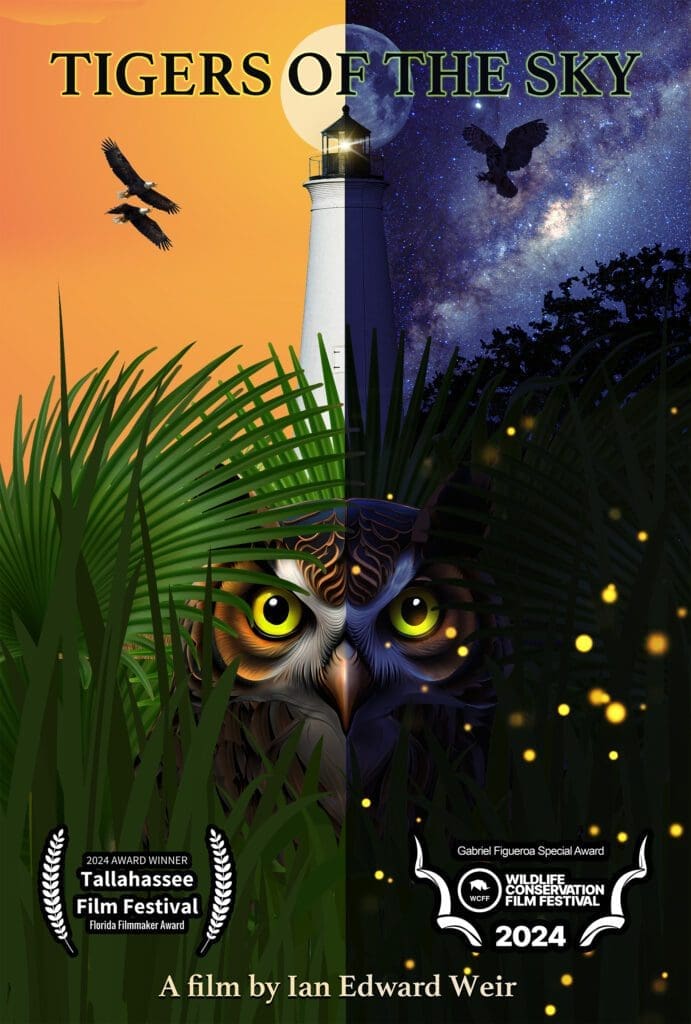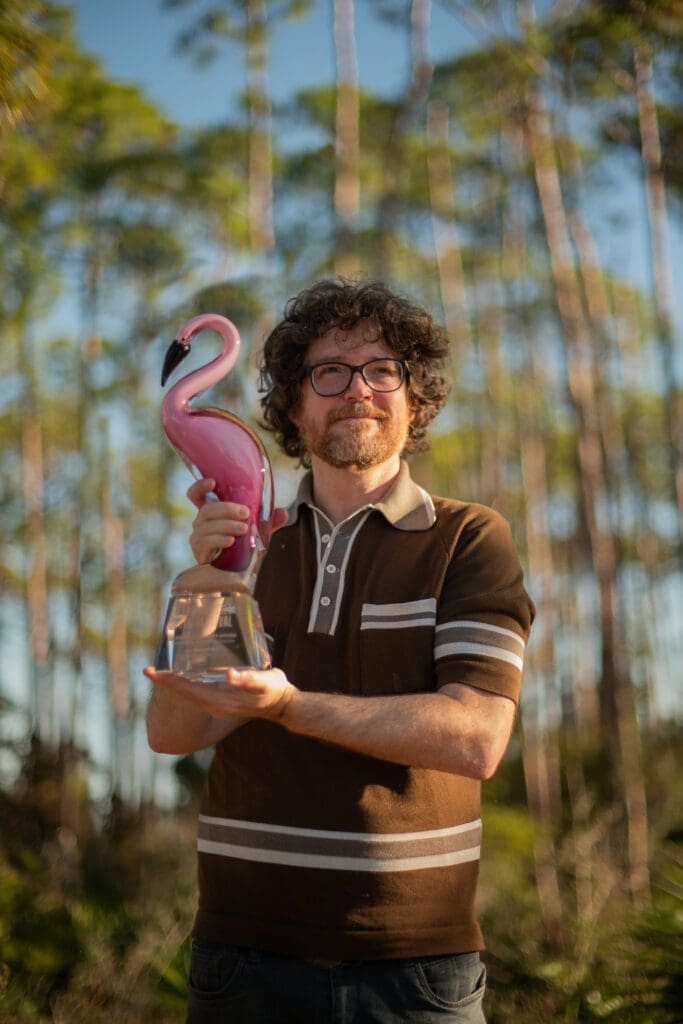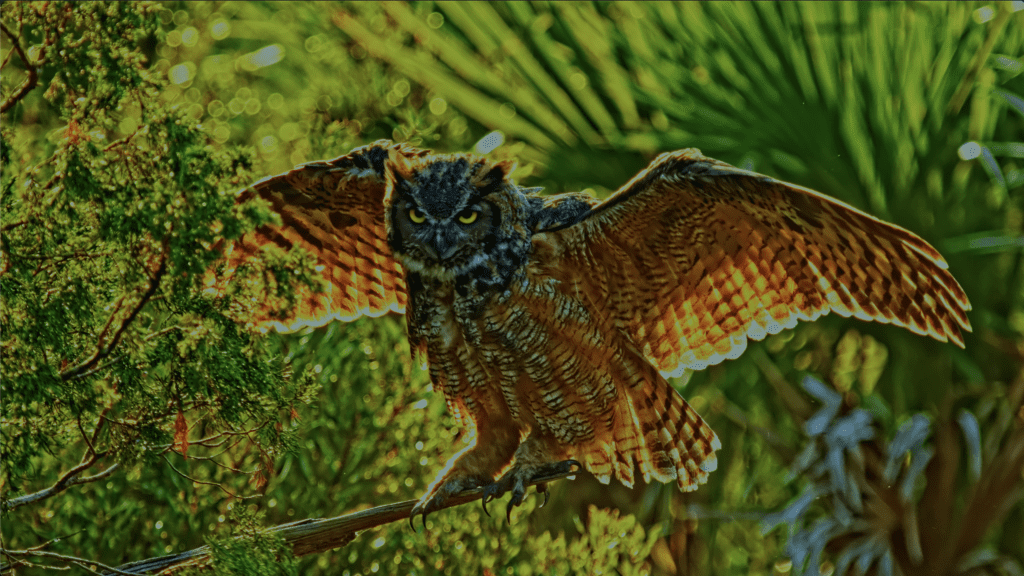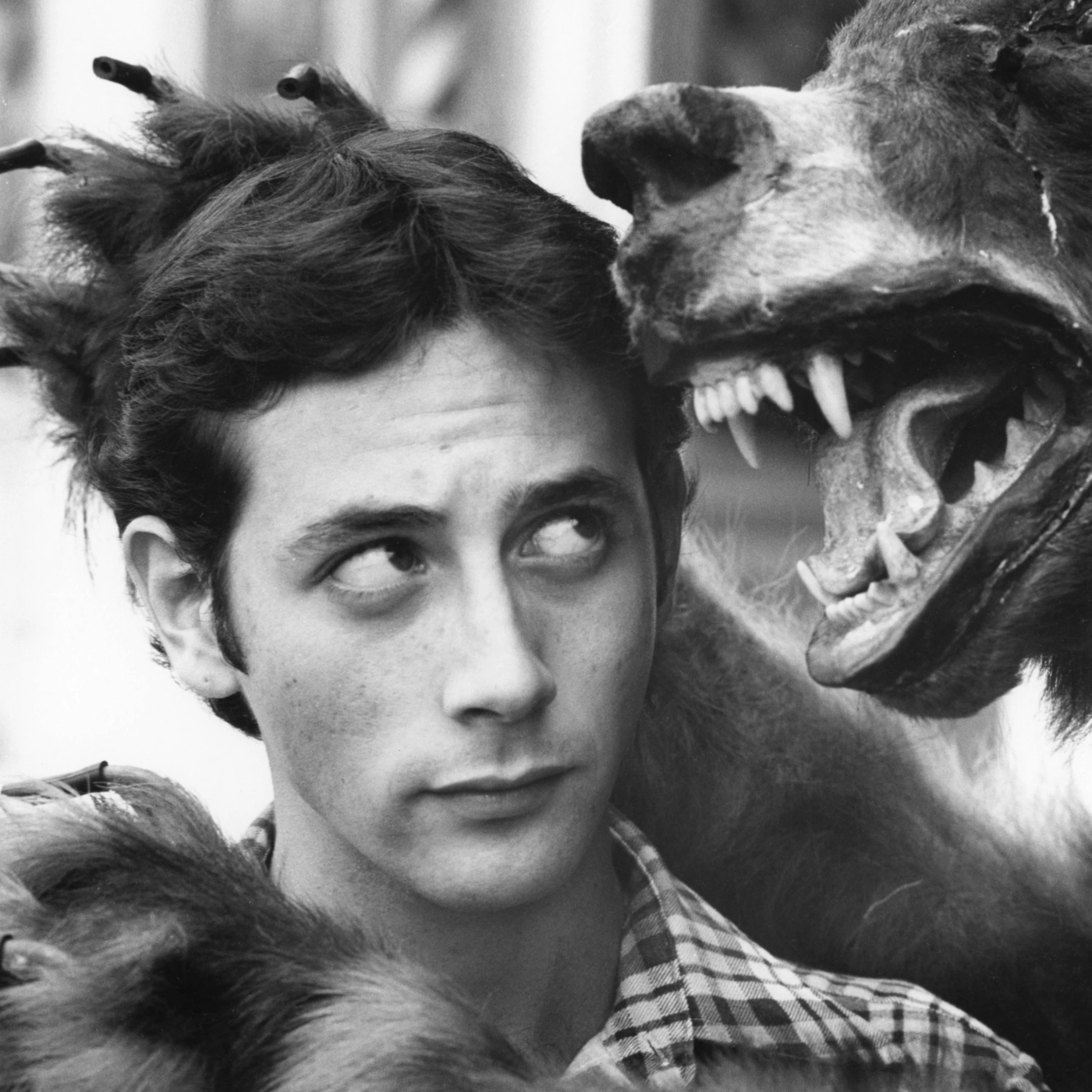Filmmaker Ian Weir’s “Tigers of the Sky” Documentary Wins Tallahassee Film Festival Flamingo Prize
Pompano Beach native Ian Weir spent a year and a half filming the great horned owls at the St. Marks National Wildlife Refuge.
Big Bend residents know that the St. Marks National Wildlife Refuge is a magical site: 83,000 acres of unspoiled habitat sprawling across Wakulla, Jefferson and Taylor counties that, among its many wonders, is a critical winter home for migratory birds. Some avian species, though, make a permanent home there, including the stars of “Tigers of the Sky,” an 18-minute documentary that had its world premiere at the Tallahassee Film Festival late last year. This immersion into the world of the great horned owl won the fest’s top prize—the Flamingo award, co-sponsored by Flamingo magazine, for best Florida filmmaker—for director Ian Edward Weir. The honor comes with a $1,000 check and an elegant pink flamingo trophy, and aims to shine a spotlight on the state’s cinematic visionaries.
Weir, a 48-year-old Pompano Beach native and professor at the Florida State University College of Motion Picture Arts, has made a creative life from observing nature. He spoke with Flamingo about the process of making “Tigers,” which required 55 trips to the preserve to gather the right footage. Each venture took up most of a day, and the owls didn’t always make themselves available. “My wife Farnaz is my good luck charm.” Weir says. “She usually helps me find some good stuff.”

What inspired you to make a film about the great horned owl?
Ian Weir: A great horned owl is a special animal for me. I would even say that it was my spirit animal. Being that my house is reminiscent of a 1970s thrift store, there’s a lot of owl shit from the ’70s—my whole house is completely covered in anything you can think of, of owls. I saw in the (Facebook) photographer’s forum for Saint Marks that there was a baby owlet in the nest. I was like, wow. I’ll get a shot of the baby owlet. It was incredible. Not only did I get the owlet, but the mother was close by. I got a beautiful shot of the mother. I decided to go back maybe a week later, and I got another shot of the owlet, and I got another shot at the mom. Then I went back a week later. The way that it works for me is I generally get addicted to where I just want to get as much as I can.
Did you mostly stalk silenty through the foliage and wait for your moment, or did you set up a tripod and chill?
IW: It was a combination of two. Sometimes it was hunting, sometimes it would be me and my tripod scanning the trees for hours—like many, many, many hours, just standing and looking. Let me just say there’s probably about 15 hours of footage that’s boiled down over a year and a half to 18 minutes. There’s terabytes of stuff. I have footage out the wazoo.

What drew you to filmmaking and wildlife?
IW: My first love and passion in life and the thing that probably saved my life was the music of John Williams. I was a weird kid. I only listened to movie soundtracks until I was 18 and I was introduced to Nirvana. My parents were hippies. I had early Genesis and Led Zeppelin and The Doors and Beatles all in my head … (but) soundtracks were a big thing. And I was always into photography. My dad was also an avid animal lover. I grew up in a small residential house, but we had a hedgehog at one time. We had possums, chicken, a pit bull, an African gray parrot, a 200-gallon saltwater fish tank, a duck, iguanas, a pacman frog. It was insane. I actually snuck kids from my elementary school into my house because it was like a petting zoo.
There’s a lot of humor in your narration, with a nod to classic David Attenborough.
IW: My whole style is a little silly. It’s a cross between Gene Wilder’s “Willy Wonka” and Bob Ross. I like to have a little bit of fun with it and not take myself too seriously, make people laugh but then also inform them. I want to make it an enjoyable ride.

What are your favorite nature spots?
IW: St. Marks would be my number one. I filmed in Yellowstone. I did one in Yosemite. I did one in Big Sur. I even went to Costa Rica. I was in Iran. I would say it’s my passion project, going to different biologically diverse locations and just getting as much footage as I can.
“Tigers of the Sky” is currently playing at festivals around the country. Follow Weir’s YouTube channel for updates on the documentary’s online premiere as well as other nature docs from the wide-ranging filmmaker. https://www.youtube.com/@ianedwardweir
The Tallahassee Film Festival returns Aug. 30-31. Submissions are open for filmmakers at filmfreeway.com/tallahasseefilmfestival.





